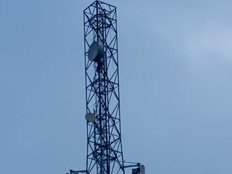Network Starter Kit
Say your agency, bureau or office merges with two others. Suddenly your network management load has tripled, and IT has only a few months to plan for a network expansion that will accommodate the current staff three times over. Now what?
If you are building out a new network, it’s a good idea to leave room for expansion or purchase equipment that is scalable. Whether you’re revamping an old network or building a new one, here are more best practices:
1. Test existing network drops.
If you are using existing network drops, ask your data cabling team to test them. Also, before you commit to reusing existing cabling, verify its quality. If it isn’t Category 5 or better, then you will need to run all new drops.
2. Separate database servers from application servers.
Many organizations within agencies have grown bit by bit over several years, adding computers as they grew or as their needs changed. To manage a sprawling network when you move or make organizational changes, it makes sense to consolidate servers now and to provide distinct servers for database and document sharing functions.
3. Determine traffic patterns.
Michael Hall, director of PC engineering at DriveSavers Data Recovery in Novato, Calif., says if you’re planning a new network, the best way to start is by determining which type of traffic pattern you’re going to have internally and designing the network to accommodate that.
“If you’re generating a great deal of information that needs to pass through the network on a daily basis, it’s a good idea to set up a centralized server to handle that, and make sure the server is very robust with a tremendous amount of storage,” Hall says. He also recommends considering fiber for greater throughput because speed, efficiency and safety are paramount.
4. Have a backup plan.
Hall also recommends implementing a backup procedure and testing it regularly. He says it’s crucial to test the backup system often to make sure that you can restore the data on another form of media.
5. Conduct a site audit.
Michael Speyer, a Forrester Research consultant, recommends a site audit of the space where you’ll set up the network.
If you’re moving into a new facility, you need to find out if there is existing infrastructure. Check to see if there are wiring and patch panels, if you are inheriting a phone system or if you have to build everything from scratch.
If you’re moving into an existing infrastructure, you’ll need to consider which upgrades might be required and whether your new network will be wired or wireless.






